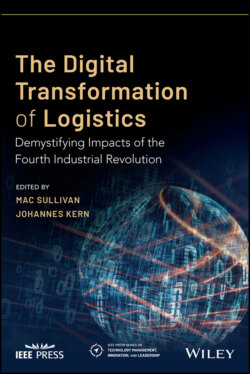Читать книгу The Digital Transformation of Logistics - Группа авторов - Страница 35
New Business Models Emerging
ОглавлениеNow that the majority of logistics companies have adopted enterprise resource planning (ERP) systems as their core systems, such as from Oracle, SAP, or CargoWise One, there has been a rise in the standardization of some global processes that have enabled them to potentially use other technology. Native integrations with SaaS providers like Salesforce, QuickBooks, and Workday are allowing ERPs to exchange data seamlessly and instantaneously through APIs. This exchange creates a mountain of data that if correctly analyzed can be used to identify inefficiency, improve forecasts, and reduce labor costs. AI for logistics is particularly attractive in that there are bill of lading databases, shipment logs, and customs documents of millions of previously moved shipments that could be scrubbed to backtest algorithms.
AI, defined here as sophisticated algorithms that can parse information, has been shown to predict when a customer is going to buy something and when an aircraft engine needs servicing or alert a person that they are at risk of disease (Economist 2017). The hub economy companies have shown the amazing potential of data wrapped with algorithms to solve consumer problems. Technology and investment simply are not enough to enable AI to help give sophisticated business intelligence or better evaluate customer needs. To mine the data that drives AI, companies must have the infrastructure in terms of data management, the will and power to ensure data governance, and the talent to be able to identify, isolate, and cleanse data flows. Talent, as shown in Figure 1.3, is the last step in the foundations of a digital transformation. Traditionally programmers had set about training AI or a robot in rule‐based “teach” patterns. However, with neural networks, raw data can be fed into the network, and the patterns are identified (Lee 2018). All of this is great but is useless unless an organization can feed the network huge amounts of data with clear algorithmic parameters focused on a narrow and specific goal (Lee 2018). In short, it takes a concerted effort by a talented, well‐funded team with a clear set of business goals and strong organizational support in terms of technical and permissioned access to unlock the potential for AI.
Figure 1.3 Foundations for digital transformation.
As more logistics companies move away from working off spreadsheets and emails, they will be able to more effectively utilize technology due to the offering of Software as a Service (SaaS) that is discussed in Berry's chapter on the rise of cloud‐based systems in logistics.
